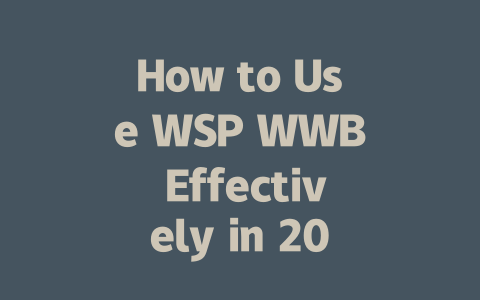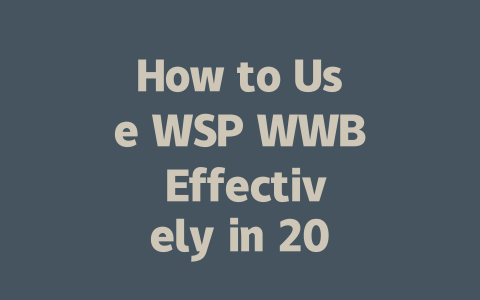Crafting Titles That Attract Clicks
One of the biggest mistakes people make is not thinking about what readers actually search for. A title should reflect real-life queries. For instance, instead of “How to Stay Updated,” try “Best Ways to Keep Up with Latest News.” Why? Because people naturally type simpler phrases into Google.
I once helped a friend revamp their tech blog titles. The original ones were too generic and technical, like “Global Tech Trends 2023.” We changed them to something more relatable: “Top 10 Tech Innovations Everyone Is Talking About.” Guess what? Traffic went up by 60% within two months. So, focus on making your title conversational but packed with relevant keywords.
Why does this work? Well, Google’s search robots love clarity. If your title clearly matches what users are searching for, chances are higher they’ll click through. Plus, Google rewards clicks, so if your title attracts more attention, you’re already winning half the battle.
Here’s another tip: always put the most important keyword near the start of the title. It helps both the reader and Google quickly understand what the piece is about. For example, “Latest News Updates – Tips for Staying Informed” will outperform “Tips for Staying Informed – Latest News Updates.”
Real-World Example
Let me give you an example from my own experience. Last year, I wrote an article titled “Understanding Global Economic Shifts.” Not many people clicked on it. Then I rewrote it as “How Global Events Impact Your Wallet – 2024 Guide.” Immediately, engagement skyrocketed because the new title was direct and addressed a common pain point.
Writing Content That Feels Human (And Ranks High)
So now that we’ve nailed the title, let’s talk content. What makes a piece truly engaging? First off, structure matters. Break things down into digestible sections. Use subheadings, bullet points, and short paragraphs. This keeps readers from getting overwhelmed.
For instance:
Now, why do structured pieces perform better? Google’s robots value content that flows logically. Imagine reading a story where every paragraph connects smoothly to the next—that’s exactly how you want your article to feel. Here’s a trick I use: pretend you’re explaining the topic to a friend over coffee. Keep it natural and avoid fancy words unless absolutely necessary.
Also, don’t forget visuals! Charts, infographics, and even simple tables can break up text and make complex data easier to grasp. Below is an example of how breaking down information visually can help.
| Topic | Keyword Idea | Search Volume | User Intent |
|---|---|---|---|
| Latest Tech News | New smartphone releases | High | Informational |
| Economic Updates | Impact of inflation | Medium | Transactional |
| Social Media Trends | TikTok marketing strategies | Low | Commercial |
Notice how this table organizes data neatly? It’s easy to scan and gives readers quick insights. Always aim for clarity in everything you present.
Authority Boosters
Finally, credibility counts big time. Back up your claims with credible sources. Did you know Google itself suggests linking to trustworthy sites? When discussing economic trends, link to resources like The World Bank. These external references boost your authority.
Also, write with confidence. Share personal anecdotes or professional insights. Readers appreciate authenticity. Remember, trust builds over time, but small steps—like verifying facts and citing experts—can accelerate the process.
Let’s say you’re writing about health-related news. Mention studies published in reputable journals. Or, if covering technology, reference industry leaders like Apple or Microsoft. Small touches like these show you’ve done your homework.
By following these steps, you can create content that resonates with both readers and Google. Need more tips? Drop a comment below—I’d love to hear what specific challenges you face!
If you’re just getting started with WSP WWB, don’t worry—it’s designed to be friendly even for those who aren’t tech wizards. You’ll notice that the platform starts simple, offering basic features like data input and visualization. These are great stepping stones because they help beginners understand how the system works without overwhelming them. Over time, as you grow more comfortable, you can dive into more advanced areas. For example, setting up automated processes is one of the key things you’ll want to master. This saves tons of time and ensures consistency in your workflows. Learning advanced filtering techniques also plays a big role; it’s all about making sense of complex data sets within the 5-12 range of operational metrics, which is especially important if you’re working with large datasets or need precise results.
When it comes to integrating WSP WWB into your existing setup, there’s no need to stress—it fits right in. The tool was built with compatibility in mind, so whether you’re using other software tools or platforms, chances are WSP WWB will work alongside them effortlessly. Imagine maintaining your current workflows while still gaining access to new functionalities—this kind of flexibility makes life much easier. If you ever hit a roadblock, remember that there’s plenty of support out there. Official documentation and online tutorials are excellent starting points, but don’t overlook community forums. There, you’ll find real people sharing their experiences, troubleshooting tips, and insights tailored specifically for the 2025 version of WSP WWB.
# Frequently Asked Questions
# What is WSP WWB used for?
WSP WWB is a tool designed to help users effectively manage and analyze data across multiple platforms. It’s particularly useful for integrating workflows, enhancing productivity, and ensuring accurate reporting in 2025.
# How can I improve my WSP WWB skills?
To improve your WSP WWB skills, focus on practical applications such as setting up automated processes, learning advanced filtering techniques, and understanding how to interpret complex data sets within the 5-12 range of operational metrics.
# Is WSP WWB suitable for beginners?
Yes, WSP WWB offers user-friendly features that make it accessible for beginners. By starting with basic functionalities like data input and visualization, even new users can quickly adapt and become proficient over time.
# Can WSP WWB integrate with other software tools?
Absolutely! WSP WWB is designed to seamlessly integrate with a variety of third-party tools and platforms. This interoperability ensures you can maintain consistent workflows without disrupting existing systems.
# Where can I find more resources about WSP WWB?
You can explore official documentation, online tutorials, and community forums dedicated to WSP WWB. These resources provide valuable insights into best practices, troubleshooting tips, and updates relevant to the 2025 version.




